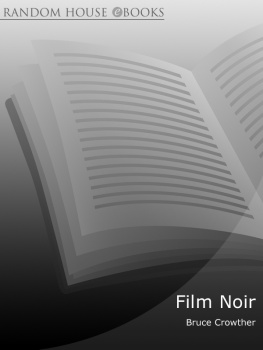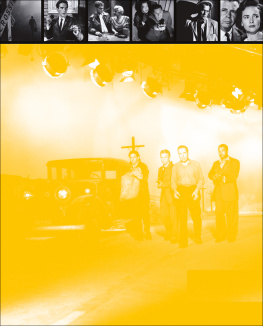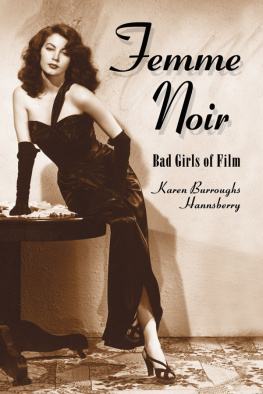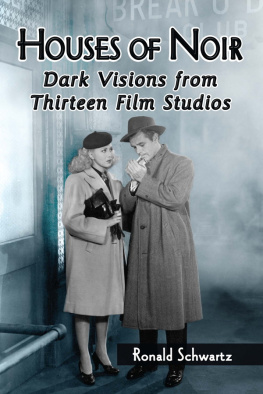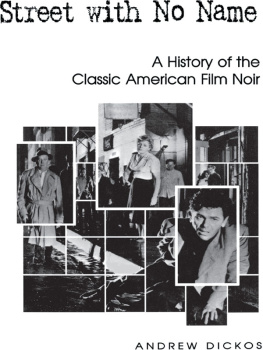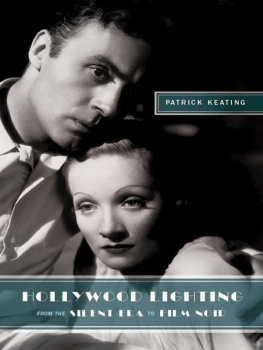The world doesnt make any heroes any more.
The Third Man
BLINDFOLDED, PRIVATE DETECTIVE Philip Marlowe sits at a table isolated in a pool of light which fails to penetrate the encircling darkness. Facing him are three cops. They are grilling him but have been unable, so far, to fracture his tight-lipped, wise-cracking shell. Another cop joins them, a man Marlowe knows, and asks for the whole story of how the private eye came to be knee-deep in corpses and temporarily blinded by a gunshot. Reluctantly, Marlowe agrees to talk.
Flatly, his voice devoid of emotion, Marlowe begins: It was about seven oclock. Anyway, it was dark
A kaleidoscope of street lights, hotel and theatre signs, brightly-lit storefronts and automobile headlamps slicing through the darkness takes us back in time.
Marlowe is at his desk in his office high above the mean streets: Theres something about the dead silence of an office building at night, not quite real. The traffic below was something that didnt have anything to do with me.
As he stares through the window into the night and the city beyond, Marlowes reflection in the glass flashes on and off, illuminated by the tawdry glitter of a neon sign just outside.
Abruptly, the mirrored image in the window changes.
A huge figure looms beside Marlowe; a giant of a man, Moose Malloy, fresh out of prison and looking for his long-lost girlfriend, is about to plunge the detective into a black labyrinthine mystery wherein lie mayhem and deceit, corruption and death.
This is the opening scene of a movie, Farewell, My Lovely (1944), based upon a private-eye novel by Raymond Chandler. It was an early example of a new kind of movie that was quite unlike anything that Hollywood had made before but which, like the musical and the western, is instantly and unmistakably identifiable as American.
It was not until later that these movies, which have been characterized as being sombre in tone and cynically pessimistic in mood, picked up a label: film noir.
Much less readily defined than either the musical or the western, the film noir category, while often centring on tales of cops and crooks and private eyes, usually reflects a darker world than that inhabited by such characters in other movies or even in real life. In place of the frothy romanticism at which Hollywood used to be so adept come haunted visions of doomed men and women for whom love is replaced by blind passion and sexual obsession, which often erupts into violence and cold-blooded murder.
Deceit and duplicity run their crooked courses through these stories, pervaded by an atmosphere of impending doom. Women are predators, ensnaring weak-willed men, yet, like the men they enslave, they have no control over their lives.
In Double Indemnity (1944) the icily malevolent Phyllis Dietrichson, played by Barbara Stanwyck, exploits her sexual allure to manipulate hapless Walter Neff, played by Fred MacMurray. However aware Walter may be of his impending downfall, he is unable to stop himself being sucked into a maelstrom of deceit and murder, at the bottom of which must lie his own death.
Out of the Past (1947) features another femme fatale, in the shape of Kathie Moffett, played by Jane Greer. As lethal in her way as Phyllis Dietrichson, Kathie coldly employs her body and her sexuality to seduce Jeff Bailey, played by Robert Mitchum, into involvement with criminal deception and murder. Here, too, the obsessed males ultimate fate can only be death, which he accepts with perverse relief at being released at last from the clutches of his beautiful but evil nemesis.
Night and the City (1950) is filled with highly stylized visual images as the forces of darkness press in upon the seedy, amoral, frenetic world inhabited by ignoble Harry Fabian. Played by Richard Widmark, Harry plunges desperately through a claustrophobic world beset by menacing shadows in a futile attempt to evade his fate.
Film genres are usually easy to identify: a class or kind of film with common content or style. But, more than content or appearance, it is that pessimistic mood which most identifies film noir often one of foreboding; a peculiarly intense anxiety; obsession, usually sexual; and above all a tension created by fear of violence and the inevitability of death.
This has led some observers to assert that film noir is not a true genre, but there is no sound reason for denying its instantly recognizable characteristics. Mood is, after all, just as much a part of film-making as any other, more tangible, quality.
The movies which make up the film noir genre were not made for a select group of connoisseurs but for the general public. They frequently starred popular actors such as Joan Crawford, Burt Lancaster, Gloria Grahame, Robert Mitchum, Barbara Stanwyck and Robert Ryan. These movies were made as entertainment; their makers had no idea of creating a cult but were simply going about their business, treating the movies as a job of work to be completed efficiently, on time, and ideally under-budget.
The majority of these movies were based on crime stories, but they were quite unlike the earlier genre of gangster movies, which for all their preoccupation with violence and sudden death very much reflected the American Dream: young men rising to fame and riches through their own positive actions albeit criminal ones (the film-makers code of the day decreed, however, that such wrong-doers should pay for their crimes by dying in the last reel).
Film noir tales showed the other side of the American Dream, in which death has been preceded not by success but by grim failure.
Most films noirs were made in the years between 1945 and 1955 but they are by no means a thing of the past. In recent years it has become something of a fad to make films which echo the noir tradition, but even these movies, like those which inspired them, are made as popular entertainment.
The origin of the term film noir (the literal meaning of which is black film) is easily explained.
Shortly after the end of the Second World War a rush of American movies appeared in France, where French critics and writers noticed certain common factors that held for them an instant appeal. Perhaps the French, emerging as they were from the shadow of war and with a between-the-wars literary tradition of deep pessimism, were more attuned to these qualities than were their transatlantic counterparts, who were not only slow to recognize film noir as a genre but were equally hesitant to give such movies more than a passing nod of acknowledgement.
In some cases the movies were based upon the work of such novelists and short-story writers as James M. Cain, Raymond Chandler and Dashiell Hammett. The work of these and other American writers of the tough-guy and hard-boiled schools were published in France under the imprints Srie Noire and Fleuve Noire. The hard-boiled novels became known as romans noirs, a term used a century before to describe the British Gothic novel. The prevailing atmosphere of pessimism and doom in these new romans noirs

